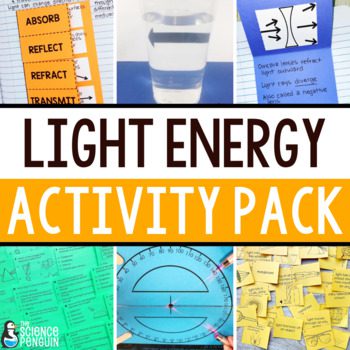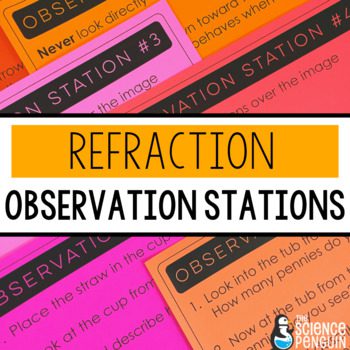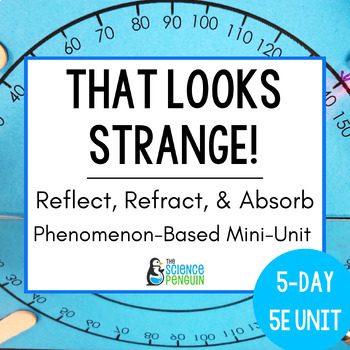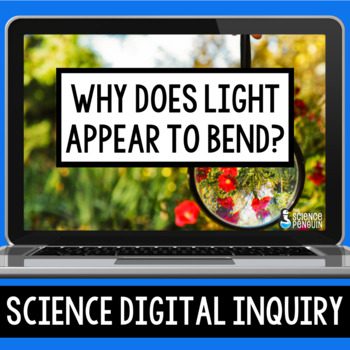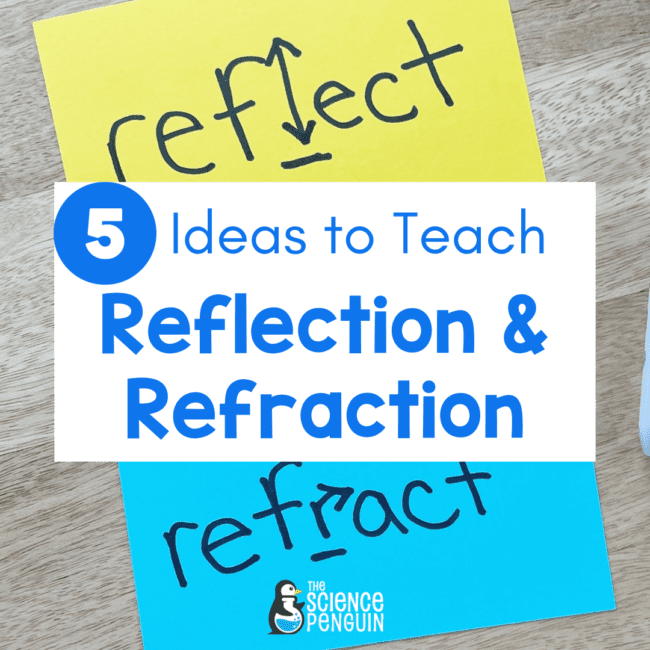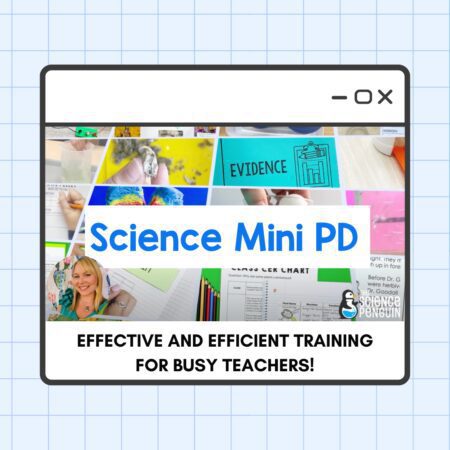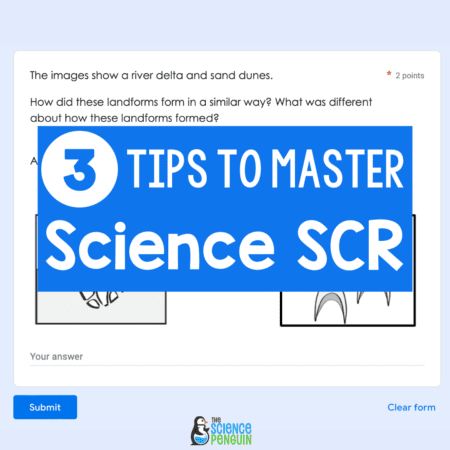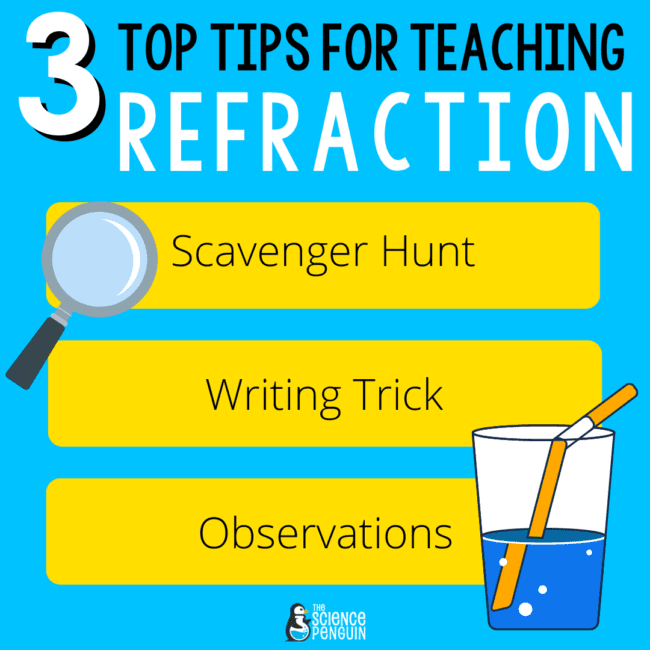
The 5th grade science TEKS ask students to differentiate between the reflection and refraction of light. Before addressing the differences between reflection and refraction, there are 3 things we do first to set students up for success.
Refraction is the bending of light as it passes through different media (materials). This happens because light travels at different speeds through different media.
Imagine you are standing in a pool and looking down at the bottom. The water in the pool acts like a lens, bending the light as it passes through. This is why the bottom of the pool looks closer than it really is.
Now imagine you are holding a pencil in a glass of water. The water in the glass also acts like a lens, bending the light as it passes through. This is why the pencil looks bent when you look at it through the glass of water.
Refraction is important because it helps us see things clearly. For example, lenses in eyeglasses and cameras use refraction to help us see things more clearly.
Refraction also helps us understand how light travels through different materials. By studying how light bends as it passes through different materials, scientists can learn more about the properties of those materials and how they might be used.
Here are our 3 top tips for teaching about refraction.
1. Scavenger Hunt
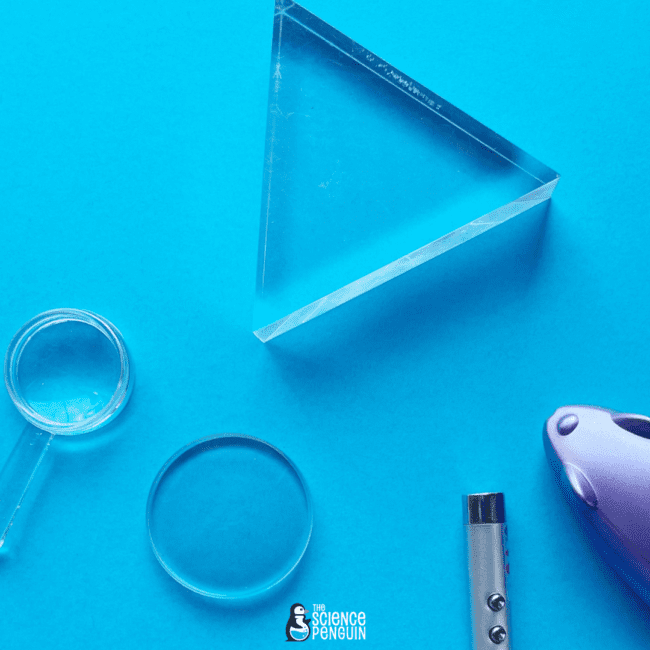
For the ENGAGE section of our light unit, we send students on a light scavenger hunt. Ask students to find at least one object in each category:
1. Something that doesn’t let light through (opaque)
2. Something that is clear and you can see through (transparent)
3. Something that looks distorted
4. Something very shiny
We make a class list of all objects the class found. Later, after students have learned about reflection and refraction, you can draw conclusions about the items and describe the items using the correct vocabulary.
Using the terms opaque and transparent will help students with refraction because light can’t refract through opaque objects. Objects must allow light through in order to refract light.
2. Writing Trick
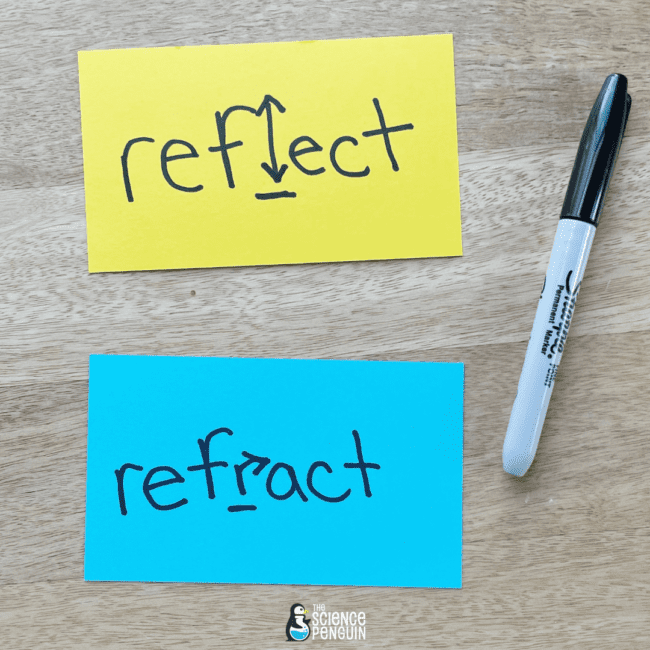
Even when students truly understand reflection and refraction, they still sometimes mix them up. Who can blame them? They do look really similar.
To help, I show them this trick. They can draw the arrows on the “l” in reflect and the “r” in refract. The lower case “l” in reflection has arrows that bounce back. The lower case “r” in refraction has an arrow that bends.
3. Observations

Students need to make lots of observations related to the refraction of light as it changes speed when passing through a new medium.
Using simple materials, students observe 6 examples of refraction using print and go Observation Stations.
See it on TpT: Refraction Observation Stations
Access the Free Resource Library
This is an exclusive library of 40+ science printables, labs, activities, and games for grades 3-6. Sign up and check your email for immediate access.

